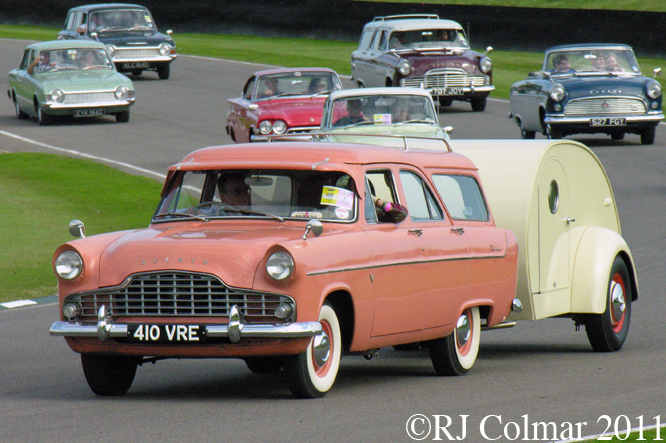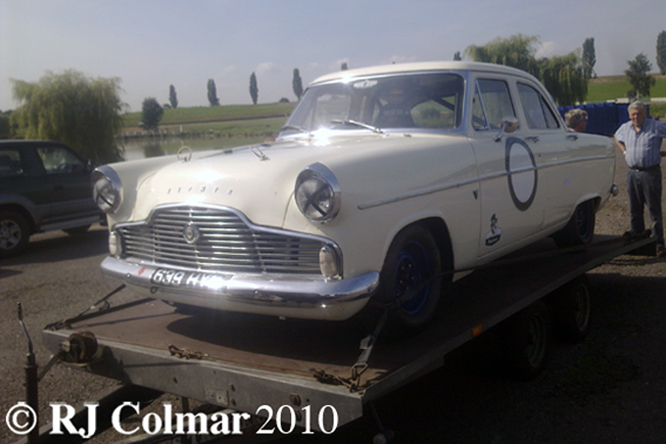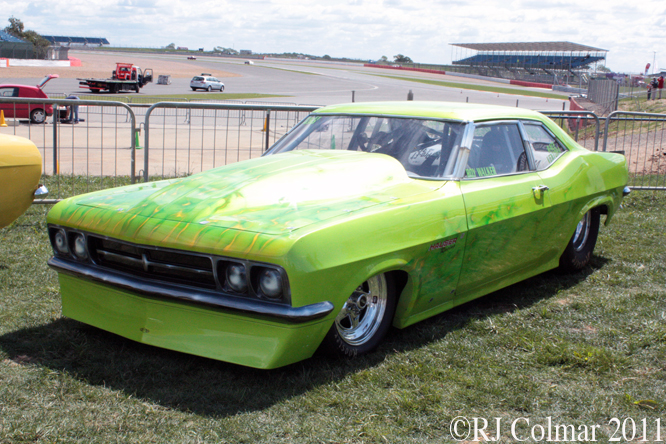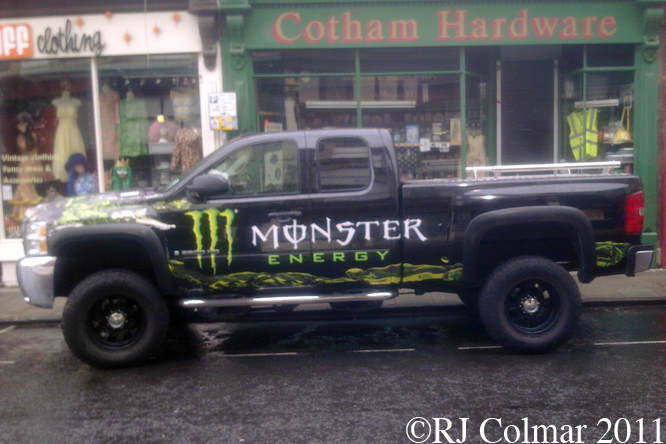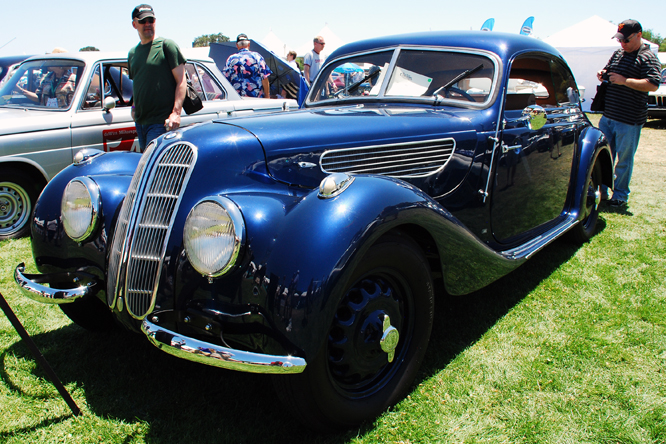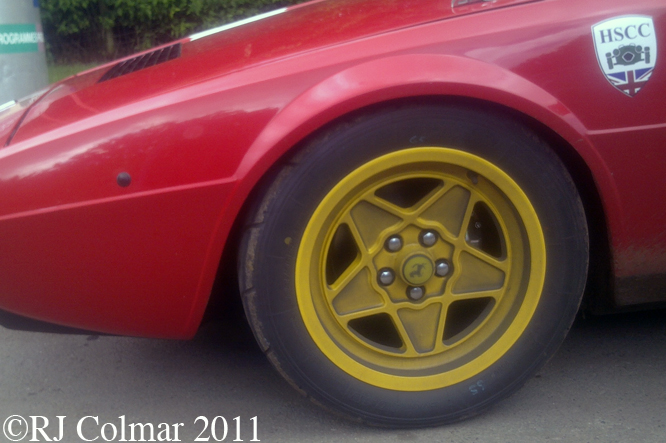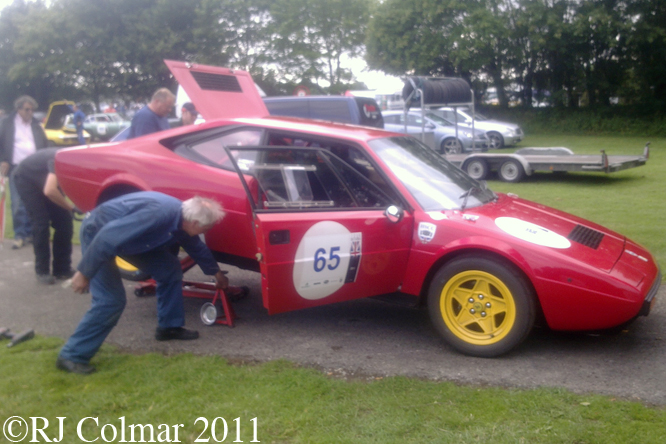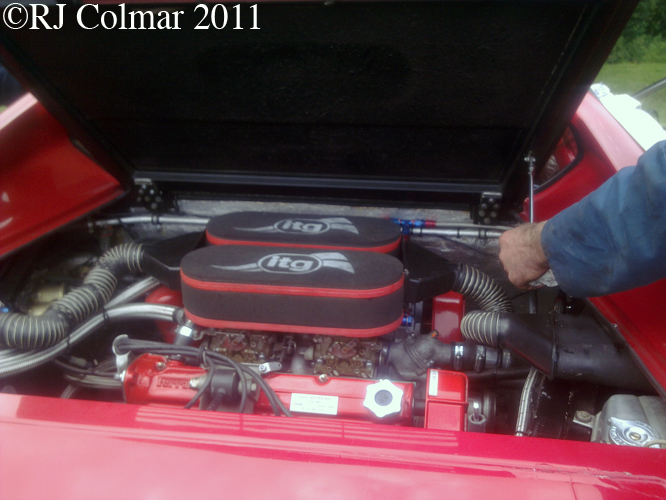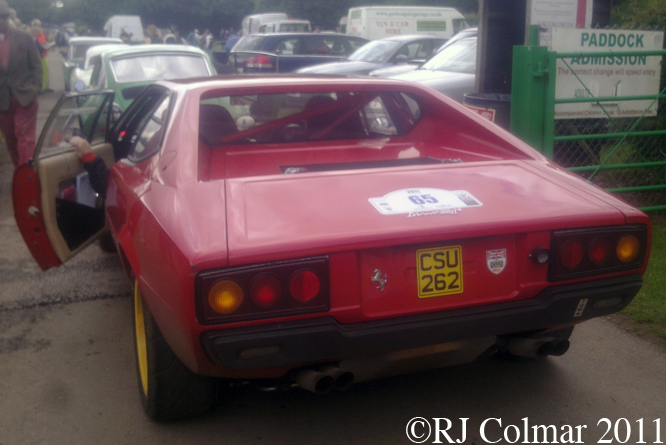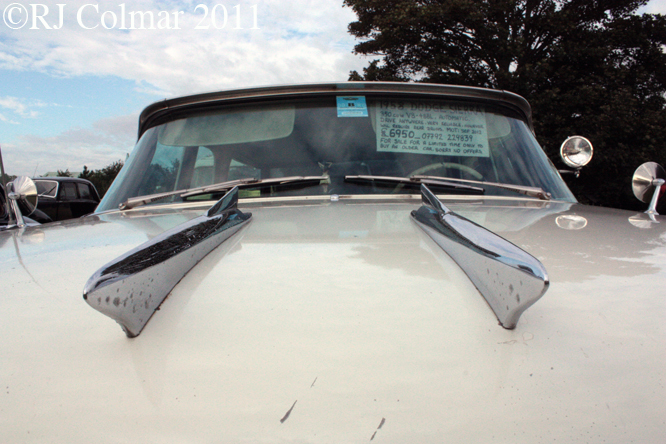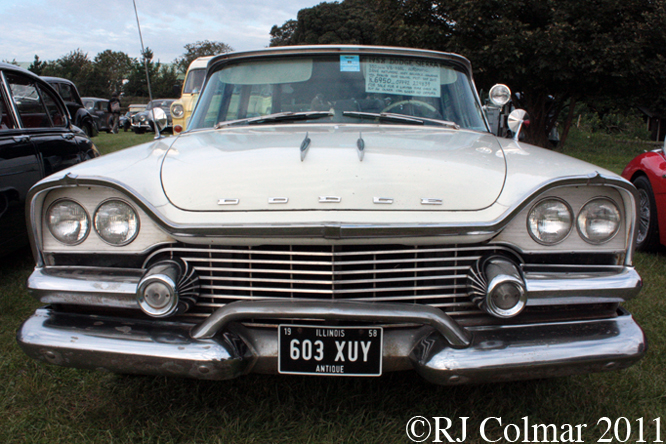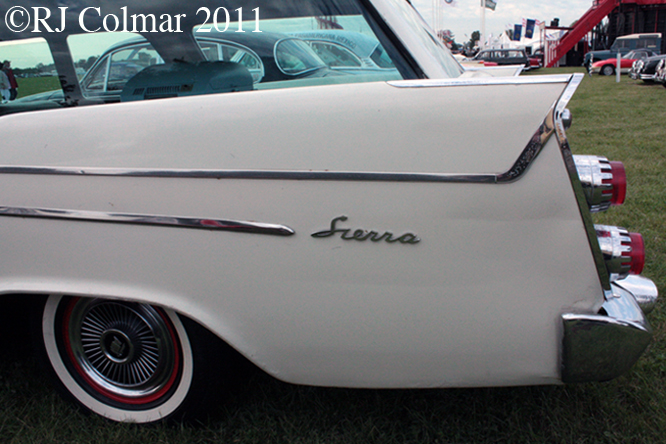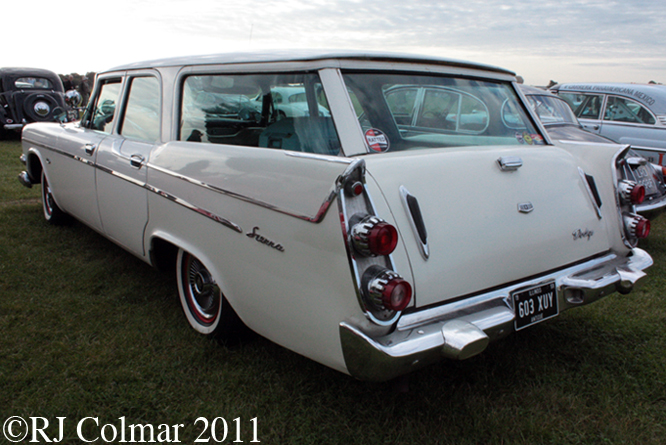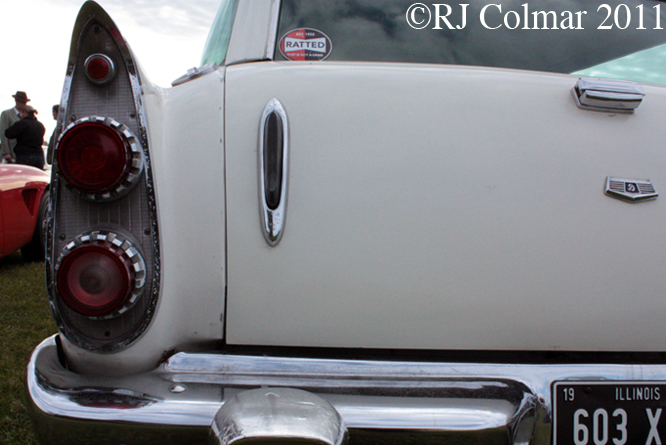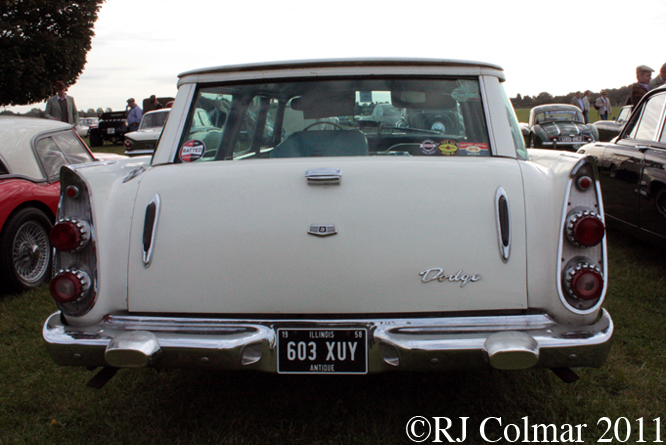In 1954 Colin Neale lead a team that styled the Ford Consul, Zephyr and Zodiac Mk2 that all shared the same body, by the end of the year prototype cars were being tested across Europe and in 1955 further prototypes were being tested against the back drop of the Mau Mau uprising in Kenya.
In February 1956 the ‘3 Graces’, as the models became unofficially known, were launched on the market the Consul with a 4 cylinder 1703 cc / 104 cui motor and the Zephyr and Zodiac with 6 cylinder 2553 cc / 156 cui motors.
Versions of the ‘3 Graces’ can be seen above, 410VRE is a 1958 Zephyr Farnham, a model which was selected by five police forces to became Britain’s first Motorway Patrol Cars in 1959. The Convertible 527FGY is a ’62 Consul, less than 30 ‘3 Grace’ Convertibles are thought to exist because the soft top conversion took so much strength out of the unitary chassis. 707JDV following the Consul is a 1961 top of the range Zodiac Farnham estate / station wagon.
The 1959 Zephyr Mk2 is seen above at Mallory Park being prepared by Ian Kellet Racing for Barrie ‘Whizzo’ Williams, seen standing to the right of the photo above, to drive in last year Goodwood Revival meeting.
Between 1956 and 1962 294,506 3 Grace models were built alongside 6,911 Convertibles. Some of all three variants were built in Fords Geelong factory south of Melbourne.
Thanks for joining me on this 3 Graces edition of ‘Gettin’ a li’l psycho on tyres’ I hope you will join me again tomorrow. Don’t forget to come back now !

